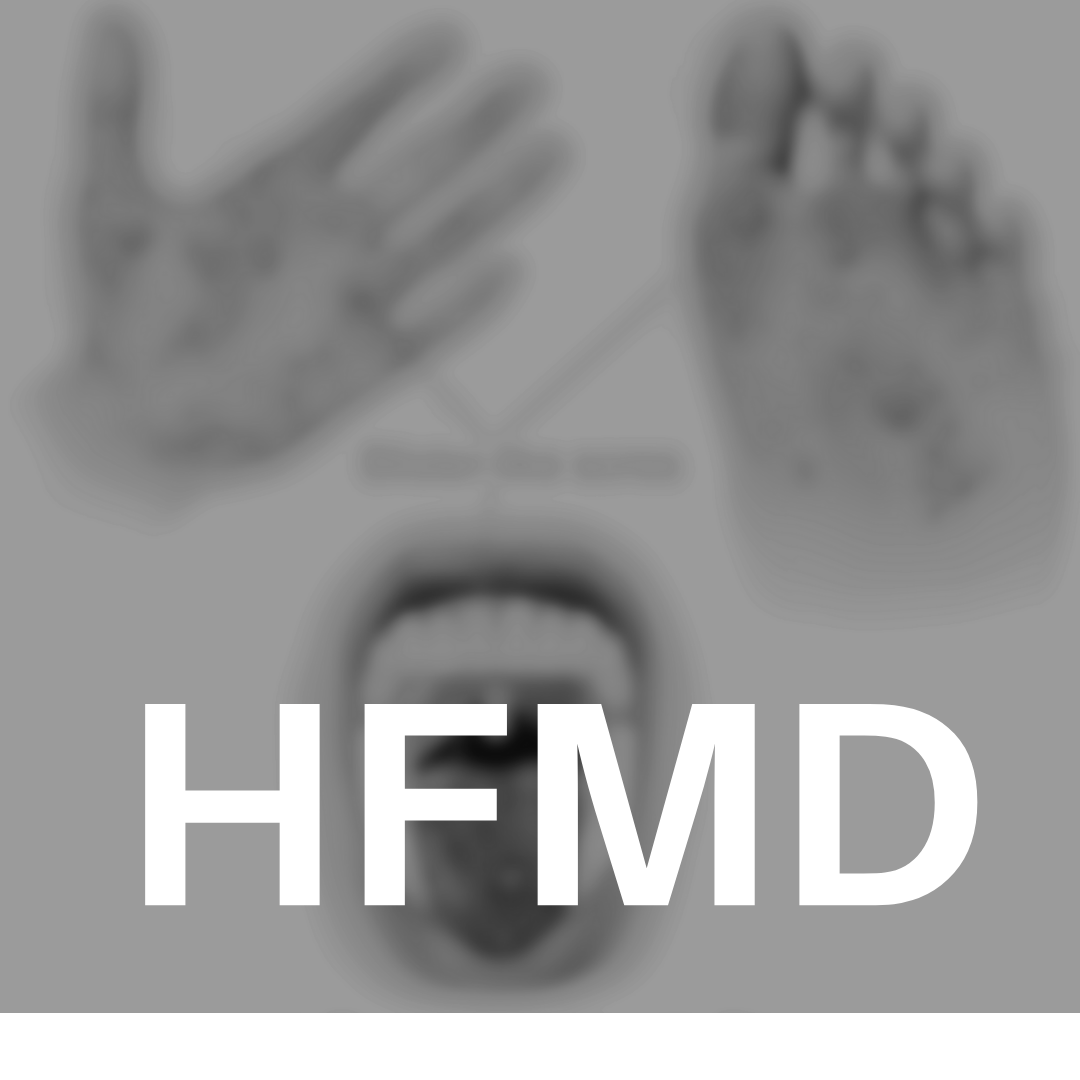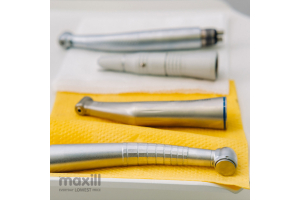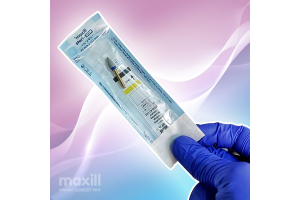Virus Facts: Hand, Foot, and Mouth Disease

Hand-Foot-and-Mouth Disease*
Hand, Foot, and Mouth Disease (HFMD) predominantly affect infants and children under 5 years old. It's characterized by symptoms like fever, mouth sores, and a distinctive skin rash on the hands and feet, sometimes spreading to other body parts like the buttocks, legs, and arms. The disease typically lasts 7 to 10 days and is caused by viruses from the Enterovirus family, notably Coxsackievirus A16 and Coxsackievirus A6, which are common in North America, while Enterovirus 71 (EV-A71) has been associated with more severe cases, especially in East and Southeast Asia.
Symptoms of Hand-Foot-and-Mouth Disease
Symptoms generally manifest around 3 to 5 days after exposure, starting with fever and flu-like indications, followed by the appearance of painful mouth sores and a rash. The infection spreads through person-to-person contact via respiratory droplets, saliva, nasal secretions, feces, or contact with contaminated surfaces. Infected individuals are most contagious during the initial week of illness, but transmission can persist even after symptoms abate or in individuals exhibiting no symptoms at all.
Fever and flu-like symptoms
Children often get a fever and other flu-like symptoms 3 to 5 days after they catch the virus. Symptoms can include fever, eating or drinking less, sore throat, or feeling unwell.
Mouth sores
Your child can get painful mouth sores. These sores usually start as small red spots, often on the tongue and insides of the mouth, that blister and can become painful. Signs that swallowing might be painful for your child include not eating or drinking, drooling more than usual or only wanting to drink cold fluids
Skin rash
Your child can get a skin rash on the palms of the hands and soles of the feet. It can also show up on the buttocks, legs, and arms. The rash usually is not itchy and looks like flat or slightly raised red spots, sometimes with blisters that have an area of redness at their base. Fluid in the blister and the resulting scab that forms as the blister heals can contain the virus that causes hand-foot-and-mouth disease. Keep blisters clean and avoid touching them.

Image taken from Wikimedia Commons
Transmission
Hand-foot-and-mouth disease spreads easily through person-to-person contact, respiratory droplets containing virus particles when an infected person coughs or sneezes, or contact with contaminated surfaces.
Hand-foot-and-mouth disease is contagious and is caused by viruses. A person infected with one of these viruses is contagious, which means that they can pass the virus to other people. The virus can spread to others through an infected persons:
- Nose and throat secretions, such as saliva, drool, or nasal mucus
- Fluid from blisters or scabs
- Feces (poop)
People with hand-foot-and-mouth disease are usually most contagious during the first week that they are sick. People can sometimes spread the virus to others for days or weeks after symptoms go away or if they have no symptoms at all.
How it spreads
You can get hand-foot-and-mouth disease by
- Contact with respiratory droplets containing virus particles after a sick person coughs or sneezes
- Touching an infected person or making other close contact, like kissing, hugging, or sharing cups or eating utensils
- Touching an infected person’s feces, such as changing diapers, then touching your eyes, nose, or mouth
- Touching objects and surfaces that have the virus on them, like doorknobs or toys, then touching your eyes, nose, or mouth
Rarely, you can also get the virus by swallowing recreational water, such as water in swimming pools. This can happen if the water is not properly treated with chlorine and becomes contaminated with feces from a person who has hand, foot, and mouth disease.
Hand-foot-and-mouth disease is common in summer and fall in North America, but you can get it any time of year. In schools and daycares. Children should stay home when they have symptoms of hand-foot-and-mouth disease.
Viruses that cause hand-foot-and-mouth disease
Hand-foot-and-mouth disease is caused by viruses that belong to the Enterovirus family; small non-enveloped viruses. Common causes of hand-foot-and-mouth disease are:
- Coxsackievirus A16 is typically the most common cause of hand, foot, and mouth disease in North America.
- Coxsackievirus A6 can also cause HFMD and the symptoms may be more severe.
- Enterovirus 71 (EV-A71) has been associated with cases and outbreaks in East and Southeast Asia.
- Although rare, EV-A71 has been associated with more severe diseases such as encephalitis (swelling of the brain).
Preventing Hand, Foot, and Mouth Disease
Prevention primarily involves rigorous hygiene practices like frequent handwashing with soap and water for at least 20 seconds, using alcohol-based sanitizers with greater than 60% alcohol, when handwashing isn’t possible, and disinfecting commonly touched surfaces and shared items. Avoiding close contact with infected individuals, refraining from touching the face without washing hands, and staying home when exhibiting symptoms are crucial preventive measures.
Stay home if you are sick with hand-foot-and-mouth disease. Talk with your healthcare provider if you are not sure when you should return to work or when your child should return to school or daycare.
Clean and disinfect frequently touched surfaces and shared items, including toys and doorknobs, using disinfectants, such as sprays and wipes to reduce spread.
Treating Hand-Foot-and-Mouth Disease
Most people with hand-foot-and-mouth disease get better on their own in 7 to 10 days. There is no specific medical treatment for hand, foot, and mouth disease. There is no vaccine or medication that protects against hand-foot-and-mouth disease, managing symptoms and preventing dehydration are essential for the duration of the illness.
Over-the-counter medications can help alleviate fever and discomfort caused by mouth sores.
It's vital to ensure that individuals, especially children, stay hydrated even if swallowing is painful due to mouth sores.
Seeking medical attention is advised if symptoms persist for more than 10 days, the fever lasts longer than 3 days, signs of dehydration are evident, or if there are concerns about severe symptoms, especially in very young children or those with weakened immune systems.
HFMD can be disruptive, but with proper care and preventive measures, most cases resolve on their own within a week or two. Regular handwashing, avoiding close contact with infected individuals, and maintaining a clean environment remain the best strategies for prevention and control.
* The core of this guidance has been provided by the CDC. https://www.cdc.gov/hand-foot-mouth/index.html
**maxill manufactures several intermediate level hard surface disinfectants. The viruses that cause Hand, Foot, and Mouth Disease belong in the hardest-to-kill viral subgroup, Small Non-enveloped Viruses. When disinfecting against the viruses that cause HFMD, consult the label for effectiveness against one of the three serotypes that cause HFMD. Since these serotypes of viruses are not commonly found on labels of hard surface disinfectants, a healthcare practitioner may consider claims on the label to similar viruses within a broad-spectrum virucide or viruses within the same taxonomic genus as Enterovirus. E.g. Poliovirus type 1, Coxsackievirus B3







